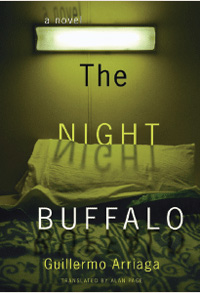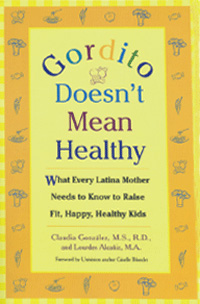 |
 |
 |
 Entertainment | Books | January 2007 Entertainment | Books | January 2007  
Everyday He Writes The Book
 Victor Cruz-Lugo - Hispanic Magazine Victor Cruz-Lugo - Hispanic Magazine


| | To find out just who is Camilo Lara - record executive, pop artist or novelist - one has to give in to all three identities. |
Camilo Lara happens to be a touring music artist following the release of Méjico Máxico, the Latintronica CD released February under his stage name Mexican Institute of Sound. But on lonely quiet evenings at home, the self-described “record junkie” hammers away at his magnum opus, his first novel, tentatively titled Messages to Myself.

“I should be done editing it soon, and hopefully it will get published by the end of the year,” he says by phone. The 31-year-old also happens to be a top EMI Mexico record executive.

According to Lara, his novel was born simultaneously with his latest CD. He says he gave up his girl for an intimacy with his computer and that resulted in both his wellreceived CD Méjico Máxico and the work fiction he’s presently refining.

In fact, Lara has a gift for segueing one career into another. As a kid, he went from waiting tables to buy records at 13, to working for a major record label at 17 and thereby touring with Radiohead in Mexico, he says, before the band was a hit in the U.S.

Now, Lara spends weekends touring the U.S. and Europe as a musical pop artist. “The idea is a party where I take the dance part of the album and make it alive,” he says. But even as his CD gains popularity, there are still those evenings reserved for tweaking the novel he’s written.

Interestingly, the story of Lara’s novel sounds very much like a work of fiction itself, or for that matter, like many of the other true-life anecdotes Lara is able to rattle off after 15 years at the forefront of pop music in Mexico. “I hate technology,” he says unexpectedly.“I bought a computer and didn’t realize it didn’t come with a word processing program, so I opened up a Hotmail account and began writing e-mails to myself. Now I have this book.”

That’s the way it is with Lara. However you approach the man, you tend to find a twist. Seek out the record exec and you find yourself talking to the pop artist. Reach out to the pop artist and you find the reclusive writer toiling alone in the evenings.

And since this is our music issue, we thought we’d introduce the books section by introducing you to Lara.

Camilo Lara is presently touring as Mexico Institute of Sound (MIS). His Méjico Máxico was released by Nacional Records. His novel is forthcoming.
The Hummingbird's Daughter
Lise Alberto Urrea - Back Bay Books - twbookmark.com

 Just when you thought magical realism had run its course, Luis Alberto Urrea gave us The Hummingsbird’s Daughter, a book lavished with praise by critics, and sales by buyers, when it came out last May. Now, Back Bay Books presents the paperback launch. Just when you thought magical realism had run its course, Luis Alberto Urrea gave us The Hummingsbird’s Daughter, a book lavished with praise by critics, and sales by buyers, when it came out last May. Now, Back Bay Books presents the paperback launch.

The novel is set in Mexico during the late 19th century and charts, with fantastical flourishes, the life of the author’s great-aunt Teresita, a faith healer regarded locally as a saint in her time. Born illegitimately to a teenage mother known for having hummingbirds perched on her fingertips, Teresita matures into a formidable personality under the care and tutelage of Huila, the curandera who takes her under her wing. After facing mortal circumstances, Teresita emerges as a sought-after faith healer who challenges the authority of Porfirio Díaz’s dictatorship.

The Hummingsbird’s Daughter made many publications’ best books lists after its hardback release and recently won the Kiriyama Prize for best literature of the Pacific Rim and South Asia. Its author was also nominated for a 2005 nonfiction Pulitzer Prize for his book Devil’s Highway now scheduled to be made into a major motion picture.
The Night Buffalo
Guillermo Arriaga - Atria - simonsays.com

 Novelist and screenwriter Guillermo Arriaga makes his U.S. debut with the English-language publication of his 1999 novel The Night Buffalo (El Bufalo de la Noche), a gritty tale of love, lust and betrayal, set in Mexico City. With slow-burning prose Arriaga tells the story of Manuel, a young man forever changed by the suicide of his best friend Gregorio, and the lure of Tania, the woman they both fall for. Novelist and screenwriter Guillermo Arriaga makes his U.S. debut with the English-language publication of his 1999 novel The Night Buffalo (El Bufalo de la Noche), a gritty tale of love, lust and betrayal, set in Mexico City. With slow-burning prose Arriaga tells the story of Manuel, a young man forever changed by the suicide of his best friend Gregorio, and the lure of Tania, the woman they both fall for.

Rich in sensual and visual detail, the prose smolders towards the novel’s irrevocable climax wherein Manuel must face off with the mysterious will of his dead best friend, who effectively and mysteriously haunts the rotagonist long after Gregorio’s cremation. Reality and the past dog the admirably tough, charismatic, but perhaps irredeemably tainted Manuel who can only save himself by making peace with everything this novel, in painstaking pieces, reveals he’s about to lose.

Despite Arriaga’s claim to be a novelist first, and a screenwriter second, there remains in this work the feel and pace of the cinematographic. One travels through Arriaga’s sentences as if holding the camera onto his vision, leaving little surprise as to why Arriaga’s screenplays for Amores Perros, The Three Burials of Melquiades and 21 Grams have been objects of praise.
Gordito Doesn't Mean Healthy
Claudia Gonzalez, M.S.,R.D., & Lourdes Alcaniz, M.A. - Berkley - penguin.com

 The verdict has been in for some time. We know obesity has a way of following children into adulthood. And we know Latino children have the highest rate of obesity among boys and the second highest among girls. Finally, we know the longer Latino children have lived in the U.S., the higher their rate of obesity due to the high-fat American diet. This timely tome has arrived specifically for parents in the Latino community, who armed with the information in its pages, can prevent and manage their children’s weight problems while retaining Latino sabor. The verdict has been in for some time. We know obesity has a way of following children into adulthood. And we know Latino children have the highest rate of obesity among boys and the second highest among girls. Finally, we know the longer Latino children have lived in the U.S., the higher their rate of obesity due to the high-fat American diet. This timely tome has arrived specifically for parents in the Latino community, who armed with the information in its pages, can prevent and manage their children’s weight problems while retaining Latino sabor.

This essential guide include age-appropriate menus and portions for children from their first months through young adulthood; symptoms and warning signs that a child may be overweight; a discussion of the advantages and disadvantages for the Latino diet; and a Latino food pyramid that incorporates familiar traditional foods such as jicama, papaya, avocado and more.

Penned by dietitian Claudia González, the spokesperson for Latino affairs for the American Dietetic Association and longtime health reporter Lourdes Alcañiz, who discusses the roots of obesity, this comprehensive book examines what can, and must be done, about childhood obesity. | 
 | |
 |



